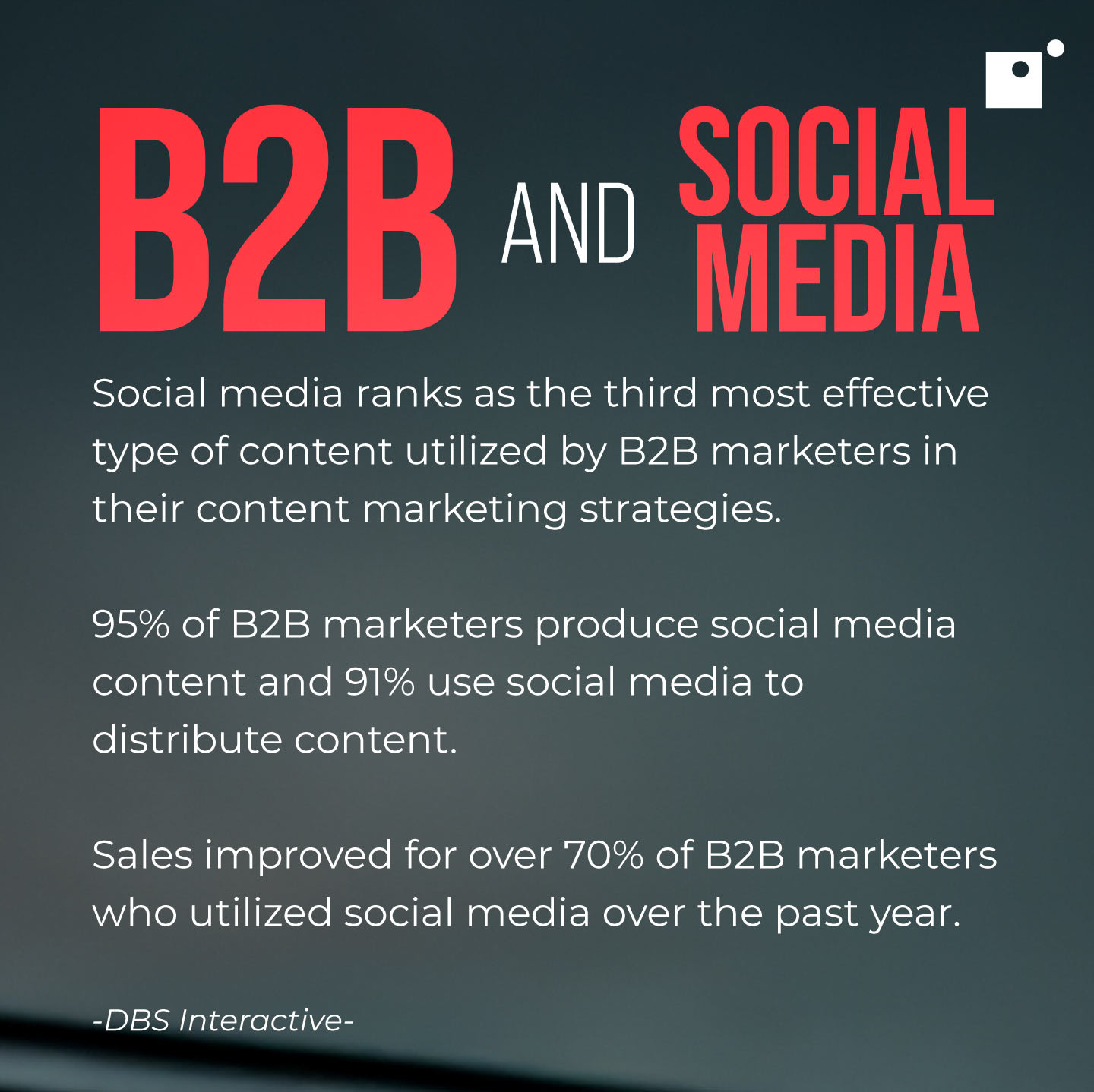Marketing isn’t always about making a direct sale. In fact, modern marketing tactics and strategies are often aimed at creating demand for your products, services, and expertise, or even just generating additional brand awareness. This is where the power of social and paid media marketing lies.
Social media gives brands the opportunity to directly connect with their audience in fun and engaging ways, rather than constantly trying to sell. This leads to a more loyal customer base that resonates with your organization and even builds a foundation of trust with your audience.
Paid media, on the other hand, gives you the chance to amplify the reach of the content you create through ads on Google, LinkedIn, and other popular platforms that users flock to regularly. By getting the right messaging in front of the right people, at the right time is where paid media truly shines.
Join us below to explore all the differences between social media and paid media and how these marketing tactics work together to create a comprehensive media marketing strategy.
Watch Impact’s webinar, Assessing Your Marketing: An Inside Look, for more information on how you can craft a powerful marketing strategy that leverages both paid and social media.
The Difference Between Social Media and Paid Media
Paid media and social media represent two distinct pillars of modern marketing, each with its unique purpose, strategy, and value. Paid media refers to any advertising that a company directly pays for to reach its target audience. This can include traditional channels like TV, radio, and print, as well as digital avenues such as search engine ads, display banners, and paid social media posts.
Paid media guarantees visibility, allowing businesses to control when, where, and to whom their message is shown. It’s a powerful tool for generating immediate results, such as driving traffic, increasing sales, or launching new products.
In contrast, social media revolves around organic engagement through platforms like Facebook, Instagram, Twitter, LinkedIn, and TikTok. Here, brands focus on building relationships with their audience by sharing content, sparking conversations, and encouraging community participation.
While paid media is transactional, social media is relational—its power lies in fostering trust and loyalty over time. Success in social media often depends on authenticity, creativity, and the ability to resonate with followers without the overt presence of an advertising budget.
The two approaches aren’t mutually exclusive, though. Paid media can amplify social media efforts by boosting visibility for posts or campaigns, ensuring they reach a larger or more targeted audience. Meanwhile, a robust social media presence can enhance paid media strategies by offering valuable insights into audience preferences and building credibility.
Together, paid and social media strategies form a complementary toolkit for achieving both short-term gains and long-term brand growth.
Making Magic With B2B Social Media
Creating a successful B2B social media strategy requires a blend of targeted, value-driven content, and audience-centric tactics. The first step is understanding your target audience in depth—know their industries, roles, challenges, and preferred platforms.
LinkedIn, for instance, is a goldmine for B2B interactions, while Twitter and YouTube can also be effective for thought leadership and educational content. Tailor your messaging to address major pain points and aspirations, positioning your brand as a problem solver rather than a product vendor.
Content is king in B2B social media, but relevance is its crown. Share a mix of case studies, white papers, webinars, and industry insights to demonstrate expertise and foster trust. Pair this with engaging formats like short videos, infographics, and live Q&A sessions to captivate your audience and spark dialogue.
When it comes to content and social media, consistency is critical, so establish a posting cadence that maintains visibility without overwhelming your team or your audience.
Amplification is another key tactic. Encourage employees to share content as this can lead to massive upticks in engagement. Finally, track performance metrics like engagement rates, lead generation, and click-throughs to refine your approach. By combining tailored messaging, valuable content, and strategic amplification, your B2B social media efforts can drive meaningful results and build lasting relationships.
Creating a B2B Paid Media Strategy
Similar to social media, a successful B2B paid media strategy hinges on precise targeting, clear objectives, and compelling messaging. Begin by defining your campaign objectives early, whether it’s generating leads, driving webinar signups, or increasing brand awareness. These goals will shape everything from ad format to budget allocation.
Next is the fun creative part; creating powerful ads that resonate emotionally with your audience. To do this, you’ll want to highlight your unique value proposition and use action-oriented language tailored to your audience's needs and pain points.
Thought leadership content, such as whitepapers and case studies, work particularly well in paid campaigns, as it positions your brand as a trusted partner and expert of industry. When it comes to launching paid media campaigns, A/B testing can help refine elements like headlines, visuals, and calls-to-action, ensuring your ads are effective.
Finally, data-driven optimization is the backbone of any B2B paid media strategy. Monitor key performance metrics such as cost-per-click (CPC), conversion rates, and return on ad spend (ROAS). Use these insights to adjust targeting, budgets, or creatives in real-time.
Combining precision targeting, engaging content, and ongoing optimization ensures your paid media efforts drive measurable results and meaningful engagement.
Using Both Social and Paid Media Strategies
Using both social media and paid media creates a powerful and comprehensive strategy that drives visibility, engagement, and measurable results. Social media fosters relationships and builds trust over time. This allows businesses to showcase thought leadership, interact directly with their audience, and share valuable content like case studies or industry insights.
This organic approach strengthens credibility and keeps your brand top-of-mind among decision-makers and influencers.
Paid media, on the other hand, provides precision and scale. It ensures your message reaches the right audience, at the right time, through targeted ads on platforms like LinkedIn, Google, and Twitter. Paid campaigns can amplify social media efforts by boosting the reach of high-performing content or promoting gated assets like webinars or whitepapers to generate qualified leads.
Together, these strategies complement each other. Social media builds the foundation of trust and engagement, while paid media accelerates reach and drives immediate action. By integrating both, you can achieve short-term wins and sustained long-term growth, all while strengthening your brand and winning a larger market share.
The Role of Content Marketing in B2B
B2B content marketing truly serves as the backbone of both paid and social media strategies, acting as the vehicle for delivering value to your audience.
On the social media side of things, content marketing helps build trust and authority through engaging posts, thought leadership articles, and interactive formats like polls or videos. The focus is on sparking conversations and nurturing relationships by addressing industry challenges and providing actionable insights that resonate with your audience.
While in paid media, content marketing amplifies these efforts by extending the reach of premium assets such as whitepapers, case studies, or webinars. Paid campaigns excel at driving targeted traffic to gated content, generating qualified leads while positioning your brand as a trusted resource.
By aligning your content strategy with your audience’s needs and leveraging both paid and social platforms effectively, you create a cohesive, multi-channel approach that enhances visibility, credibility, and conversion potential.
Wrapping Up on B2B Social and Paid Media
Modern marketing goes beyond driving immediate sales—it’s about building connections, generating demand, and amplifying your brand’s presence in meaningful ways. This is the true strength of a well-integrated social and paid media strategy.
Social media fosters authentic relationships by engaging your audience through creative, value-driven content. It’s where trust and loyalty take root, forming the foundation for long-term success. Meanwhile, paid media amplifies these efforts, extending your reach and ensuring your message connects with the right people at the right time.
By leveraging the unique strengths of both approaches and weaving in a thoughtful content marketing strategy, you can create a cohesive and impactful plan that drives results and positions your brand for sustained growth. The possibilities are limitless when social and paid media work together in harmony.
To learn more about modern marketing tactics that blend both social media and paid media strategies, watch Impact’s webinar, Assessing Your Marketing: An Inside Look.


